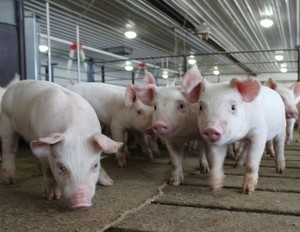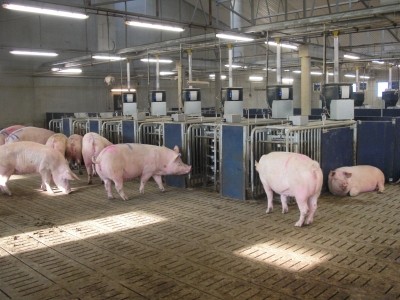US: Questions remain as VFD start date approaches

The updated VFD, announced by the US Food and Drug Administration (FDA) are set to take effect at the end of the year, the agency said. They recently sent out a reminder of the upcoming deadlines as changes start in December.
Alterations include that drug sponsors are rewriting labels moving specific medically important antibiotics used in feed or water from over-the-counter use to prescription use or to require a VFD, the agency said. Drugs requiring a prescription or VFD will need to be approved for use by a veterinarian.
Businesses that handle the products have to meet all state and federal standards, and veterinarians also have seen updated information on when they should prescribe medically important antibiotics for use in animal feed, said the FDA. The work is part of the agency’s efforts to reduce use of antibiotics that are important for human use.
However, there are some questions and challenges not yet addressed to enable the transition including the timeline for creation of the new drug labels, paperwork requirements, use of certain types of drugs, potential for treatment delay and access to veterinarians, said Richard Sellers, senior vice president of public policy and education with the American Feed Industry Association (AFIA).
“We’ve been going back and forth with FDA on a regular basis,” he told FeedNavigator. “We’re not yet ready to put out some guidance documents."
Remaining questions
Sellers wonders whether drug companies are ready to meet deadlines for creating the updated drug and product labels.
“Supposedly, at the end of the month, all of the changes by drug sponsors will have been submitted,” he said. The new labels would then be published in December and take effect in January, he added.
There are also concerns raised over whether the new process will result in a potential treatment delay, said Sellers. Once a veterinarian has approved treatment and written a VFD for a producer, there still could be time lag in finding the medication to generate a feed, if the feed mill has to order a product, he said.
The record system involved with correctly filling out and keeping a VFD also has generated a certain amount of anxiety, as there aren’t many electronic systems that can be used, said Sellers.
However, the AFIA has a request in to the FDA that could simplify the record-keeping process and is waiting for an answer, he said. “They’re considering that request and it looks pretty positive at this time,” he added.
There also are some remaining questions about the labeling and use of treatments like liquid feed supplements, medicated blocks and free-choice medicated feed that are still be answered, he said. “Those three types of products will be VFD and they’re addressing that internally – but time is getting on,” he added.
Producers in several areas also have raised concerns about finding access to veterinarians, especially in a time-critical situation, said Sellers. However, members of the aquaculture industry may have the toughest time finding an area-specific veterinarian, he added.
The organization suggestion producers start accessing guidance documents published by the FDA about the upcoming changes and making sure to develop a relationship with a veterinarian, he said. “It’s going to be different for each segment of the industry and we’re seeing that FDA doesn’t have full knowledge of the segments of the industry,” he added.
“The integrated operations are in the best position, they all have veterinarians on staff – the large integrated feed mills as well,” said Sellers. “The ones at more of a disadvantage would be medium size hog producers who aren’t under contract and have a small feed mill or grinding mixer.”
Feed mill influence
One of the changes that feed mills may see is the need to be part of the discussion between the customer using a medicated feed and the veterinarian, said Chris Richards, associate professor in the department of animal science and beef cattle extension specialist at Oklahoma State University.
“The regulation is going to require that the customer, feed dealer and veterinarian have a working relationship to generate the appropriate documents and approvals for producing feeds when producers are going to [use them],” he told us. “In most cases before the products in feed did not require a veterinary approval.”
Soon, a VFD will be needed before the medicated feed can be delivered and there will be tighter restrictions on how long the product can be fed or kept, he said. But, some of the process could be smoothed by preplanning for the transition.
There is some concern that feed mills generating small amounts of medicated feed may cease that type of production, said Richards.
“For an individual producer or feed mill, they may slow that down or quit doing that,” he said. “But for anybody who has done much medicated feed work it’s not going to be a big challenge.”
Although any changes can generate fear and uncertainty, planning now and establishing relationships should help mitigate some of the challenges when the new process starts, said Sellers.








